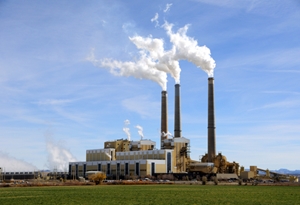Ektimo delivers stack testing consultation services to manufacturing, energy and mining companies throughout Australia. This involves measuring gas concentrations in industrial emissions, ensuring organisations are adhering to regulations developed by the Environmental Protection Authority (EPA).
All of Ektimo’s stack testers use Testo’s emissions analysers to quickly measure emissions concentrations. We caught up with Ektimo CEO Matthew Heskin to talk about the devices and his company.
What is stack testing and why is it so important?
Stack testing involves sucking an air sample out of a chimney stack and putting it into a gas analyser.
In Australia, stack testing involves taking air samples out of the ports of industrial chimney stacks. Usually that happens because of Environmental Protection Authority (EPA) compliance purposes. Companies and organisations across different sectors have environmental licences, which stipulate that licence holders must adhere to specific emissions standards.
To ensure they’re abiding by those requirements, authorities and Ektimo regularly conduct stack tests on a quarterly, annual and bi-annual basis.
We typically look for nitrogen oxides, sulfur oxides, carbon monoxide and particulates. We also search for major things such as chlorides, BOCs, metals and so on.
Effectively, stack testing involves sucking an air sample out of a chimney stack and either putting it through liquid or solid media. Alternatively, you can funnel the sample through an analyser.
What’s Ektimo’s history?
I’ve been in the industry since ’91, so about 25 years.
Ektimo is reasonably new. The company was created to bring some of the main competing companies in the market together. The concept behind the organisation was that we could work better with each other instead of against each other.
We have about 500 clients across Australia, so there’s a lot of travelling associated with the job. Many of our clients are in energy, manufacturing or mining, particularly smelting operations. Pretty much any company that has burning or combustion operations can come to us for stack testing consultation. Even wastewater treatment plants come under our purview, although we typically use different analysers to measure odour, H2S and other substances.
 Industries throughout Australia need to undergo stack testing audits.
Industries throughout Australia need to undergo stack testing audits.How many authorised stack testers are there in Australia?
We’re probably the largest company by far. Our market share is at about 60 per cent, but our team comprises nearly 70 people, 40 of whom are stack testers. I would have to guess there may be probably 60 or 70 authorised stack testers throughout the country.
What accreditation do you need to become a stack tester?
Well, Ektimo itself is accredited by the National Association of Testing Authorities (NATA). You don’t necessarily need an environmental background to obtain a qualification, but it does help. So does experience in chemistry. Because we’re accredited, we can train and certify our own personnel to make sure they’re up to speed with the latest methodologies.
Do different industries have varied licences/permits as to when to emit emissions?
That’s where the licences come into play: they detail what the concentrations and mass rates of each emission should be. Depending on the industry, you’ll have an EPA licence that allows you to pollute a certain amount, which dictates the emissions parameters for each discharge point. Although we deal with air, they have similar licences for water as well.
Does Ektimo interact with the EPA?
Yes, we do. In fact, we’re trying to interact with them more because projects often involve us as consultants, our clients and the EPA. If there are issues, transparency among the three of us can really speed up the process. Because some of our clients are generally apprehensive of working with the EPA, we typically act as the mediator between them and the authority. Overall, it just makes the relationship more productive.
Ektimo use a combination of portable analysers and wet chemistry techniques.
What kind of equipment do you use to perform a stack/emissions competence audit?
It really depends on the location, the purpose of the audit and the type of tests we need to conduct. We use a combination of portable gas analysers and wet chemistry techniques. For example, if the sample goes through the liquid media, then you have to transport it to a lab to conduct an assessment to identify the components of interest.
If you have an analyser, we can pretty much get an instantaneous measurement of the gases within the sample. These devices certainly make things easier, but there are some particulates they’re incapable of recording.
What type of Testo equipment does Ektimo use and how has it benefited Ektimo?
We’ve mainly used the testo 350, which is one of the most popular emissions measuring instruments that the company produces. It’s well designed for industrial applications and can measure multiple gases. We use that on pretty much every job, because even if we’re not testing for combustion gases we often use the 350 to measure oxygen or CO2 content. These calculations allow us to figure out the molecular weight of the emissions we’re testing.
One of the advantages of the testo devices over some of the other instruments is that they’re portable and battery-operated. Power isn’t always available at some of the locations we need to visit. In addition, if one of the facilities we’re assessing experiences a power outage, we can continue our tests without a problem.
The on-board data logger is also a huge help to us. Many of the alternative models don’t have these features built in, so we would have to take an extra step to get the information we need.









 Reduce cooking oil costs while ensuring quality
Reduce cooking oil costs while ensuring quality Expert knowledge on CO2 monitoring
Expert knowledge on CO2 monitoring Refrigeration knowledge - in 3 modules
Refrigeration knowledge - in 3 modules



